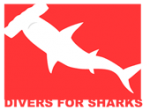Global warming
I believed that everyone had an idea that the emission of CO², generated from the amount of organic material and mainly fossil fuels, originating from oil, such as various types of gasoline and diesel oil. This gas, CO², accounts for approximately 78% of the two so-called stove gases – GEE. Another gas from the stove is or Methane, CH4, generated from the decomposition of organic matter and the digestion of two animals, called intestinal gases, or simply fart. Remains of food adding to the Garbage dumps also generate methane. These two are the main ones, plus others, as the graph below shows.

Few know, however, that the greenhouse effect was to some extent natural on our planet, and even desirable. It was not created by man, it is being increased at highly destructive rates. When our planet was still in the ice age, the formation of this layer of gases created a greenhouse, responsible for special protection against harmful solar rays, and for retaining the heat from the rays that reflect on the Earth’s surface, preventing this heat from escaping from back into space. At the beginning of the world, this effect was responsible for the melting of the so-called ice age and thus allowed the Earth to have water in liquid form in the quantity and temperature that we need to live.
It all started with the industrial era
But since the middle of the 18th century, with the industrial revolution, we started to unbalance these emissions, increasing more and more until scientists worried about the increase in temperature on the planet, through studies proved that global warming has a total direct relationship with greenhouse gases. greenhouse effect caused by the increasingly industrialized human way of life.
If we buy a cell phone that has plastic, it came from oil. If it has iron, it came from furnaces at very high temperatures burning fuel to force the metal. When driving a gasoline or diesel car, we are emitting GHGs in large quantities. By connecting a thermoelectric plant that burns coal to generate energy or heat for a city, we are emitting GHG. We raise more cattle on our planet than the number of people in the world (we have more cattle than people), this flock of more than billions of animals, emits intestinal gases in such quantity that also impacts the effect stove. It is both ox and cow releasing fumed methane that helps the planet to warm up more and more.
Chemistry helps to understand
We can talk about several consequences of the increase in GHG, such as acid rain and polar melting, but now we will talk about the effect directly in the oceans, which few are aware of. Let’s talk about the acidity of the oceans. That’s right what you read: the waters of the oceans getting more and more acidic. And just to remember and make the problem more explicit, acid in a corrosive way, capable of dissolving substances and destroying structures.
Ocean waters become acidic because of chemical reactions between the CO² that we release into the atmosphere and seawater, generating H2CO3 – carbonic acid, which will then separate into positive molecules, ions, hydrogen and carbonate. It is these Hydrogen Ions that will make the waters of the oceans more and more acidic. TODAY enough acidity to corrode or dissolve structures formed by limestone, such as the shells and exoskeletons of animals such as shellfish, algae, plankton and mollusks, attacking their shells with acid, which can kill and even lead to the local or even global extinction of animals that are very important for animals. the food web of the planet, harming the formation of the food chain in the seas as well as biodiversity as well. And if the food in the seas is harmed, it will soon be harmed all over the planet.
If acidity corrodes the base, everything else will fall
Just to make it clear, where part of the base of the food chain is destroyed, we can lose the primary and cascading predators to top chain predators such as sharks and mystic cetaceans, whales that feed by filtering the water, and rays such as mantas and sharks whale, also plankton filters.
Catastrophe from top to bottom in the web of marine life.
However, we must make it clear that fighting to reduce the climatic impacts of global warming, pure and simple, will in no way improve the problem of ocean acidification. Ocean acidification is not caused by global warming, it is a different problem caused by human GHG emissions. Different problem originating from the same cause.
And now what do we do?
If you are more aware now of what the greenhouse effect is and its problems, and you want to help the environment, a good way is to calculate how much GHG you emit. Yes, this is possible through technology, with CO2 emission calculators. Here is a great article on the topic and with a calculator on the S.O.S Mata Atlântica page.
Another way to contribute strongly is to think about replacing your fossil fuel-powered car with an electric one! Even electric boats are becoming more and more common, read here about a model at Vogue.
I will soon publish an article on carbon footprint compensation, carbon emissions, for a diving expedition from Caravelas (BA) bound for the Abrolhos Archipelago.


